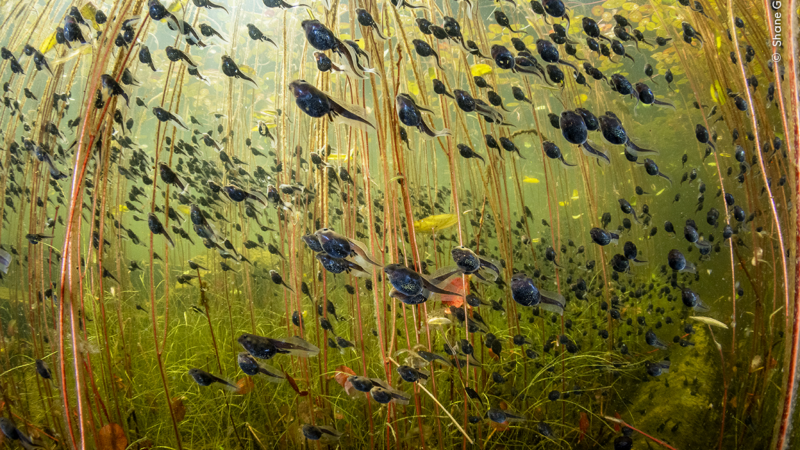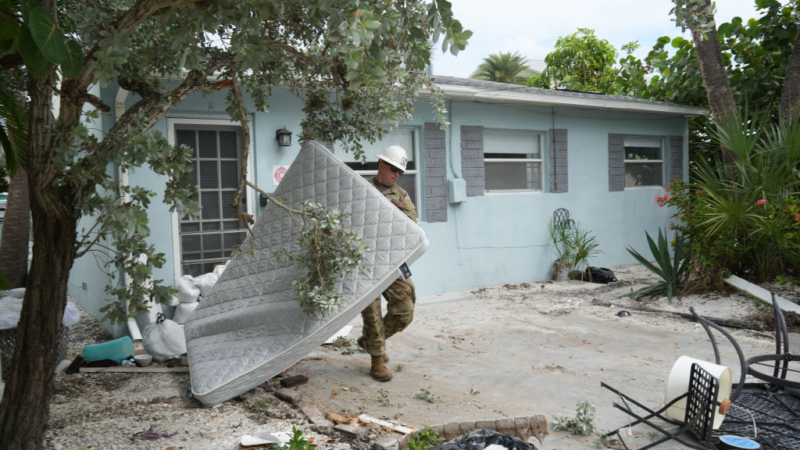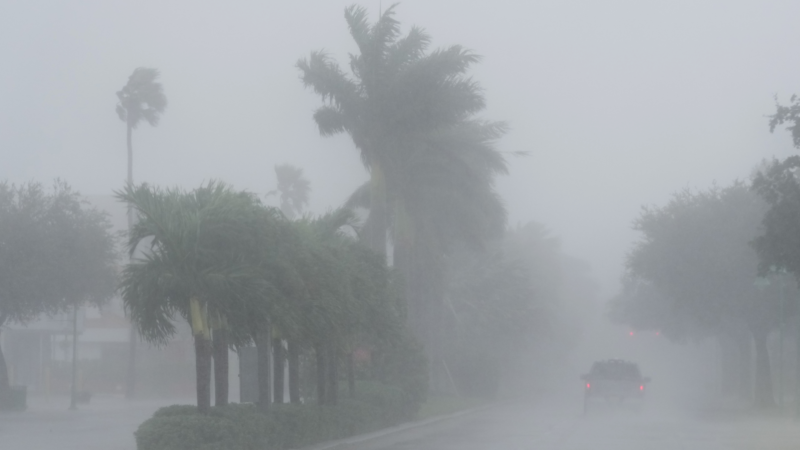Lynx, tiger and tadpoles, oh my: See the Wildlife Photographer of the Year winners
They lay in wait for hours, weeks and sometimes months, tracking animals in the wild and moving carefully so as not to disturb their surroundings.
They set up their camera traps, framed their shots and seized the moment — from a lynx stretching in the sunshine and a young monkey sleeping in an adult’s arms, to an anaconda wrestling with a yacare caiman and a falcon hunting a butterfly.
Now, thanks to those efforts, they are officially the 2024 Wildlife Photographers of the Year.
London’s Natural History Museum, which runs the prestigious competition, announced the winners of its 18 categories — from underwater to urban wildlife — at a ceremony on Tuesday. The museum narrowed down the winners from a record-breaking pool of 59,228 entries from 117 countries.
The winners will be featured in an exhibition at the Natural History Museum that opens Friday and runs through June, and will also tour internationally to venues across Europe, Canada and Australia. It will also include winners and photographic equipment from years past in honor of the contest’s 60th anniversary.
Museum Director Doug Gurr called the contest’s longevity “a testament to the vital importance and growing appreciation of our natural world.”
“We are delighted to feature such inspiring images in this year’s portfolio,” he said in a statement. “These are photographs that not only encourage further wildlife conservation efforts, but that spark the creation of real advocates for our planet on a global scale.”


An international panel of expert judges chose two grand title winners from among the 18, based on the entries’ “originality, narrative, technical excellence and ethical practice.”
The grand title of Wildlife Photographer of the Year went to Shane Gross, a Canadian marine conservation photojournalist who spent several hours underwater documenting western toad tadpoles on the move.
Gross snorkeled painstakingly through carpets of lily pads in Cedar Lake on Vancouver Island, British Columbia, careful not to disturb the layers of silt and algae at the bottom. He was able to snap the tadpoles as they swam up from the depths, dodging predators on their way to feed at the surface.
He titled the stunning scene The Swarm of Life.
“The jury was captivated by the mix of light, energy and connectivity between the environment and the tadpoles,” said jury chair and editor Kathy Moran, noting that the tadpoles are a species new to the winning archive.
Western toads are considered either endangered or threatened in parts of Canada and the U.S., due to habitat destruction and predators. The tadpoles begin their transition into toads between four and 12 weeks after hatching, but an estimated 99% of them will not survive to adulthood.
“I hope the attention this image brings our amphibians and wetlands leads to much-needed and urgent protections,” Gross posted on Instagram after his win. “If you know of an important place in your backyard, let’s rally the community together and fight for [its] protection.”


Many of the winning images draw attention to the threats facing different species around the world: a mosaic made of over 400 pieces of plastic found inside the digestive tract of a dead shearwater, a type of Australian seabird; a tiger perched on the hillside overlooking an Indian town that was once a forest; a crime scene investigator dusting a confiscated tusk for prints.
The Young Wildlife Photographer of the Year award went to teenager Alexis Tinker-Tsavalas of Germany for his image Life Under Dead Wood, which shows the tiny, fruiting bodies of slime mold (a type of single-cell organism) and a springtail (a non-insect hexapod) beneath a log.

Alexis moved fast, rolling the log over and snapping away quickly, since springtails “can jump many times their body length in a split second,” the judges wrote.
He used a technique known as focus stacking, combining 36 images — each with a different area in focus — to make one image with an even greater depth of field.
“A photographer attempting to capture this moment not only brings great skill, but incredible attention to detail, patience and perseverance,” Moran said. “To see a macro image of two species photographed on the forest floor, with such skill, is exceptional.”
Slime mold and springtails may not be as widely known as some of the other subjects of the winning photographs, like ants and a hawk. Alexis told the BBC that he hopes people will learn more through his images.


“I feel like that’s one of the biggest goals for me, to just show this tiny world that a lot of people don’t really get to see, in a different light,” he said.
Entries for the next edition of the contest will be accepted from Oct. 14 through Dec. 5. In the meantime, take a look at more of this year’s crop of winners.





Brown says no to pro-Palestinian students’ demands for divestment
Supporters of divestment ended their encampment last spring in exchange for a promise that their proposal for divestment would get a vote from the board this fall.
Why Tampa Bay is at such high risk for hurricane damage
The area has not taken a direct hit from a hurricane in over 100 years. But its topography and dense population make it especially susceptible to severe damage from storm surges.
Keep calm and hunker down: Floridians brace for Hurricane Milton’s impact
In spite of the very real threat to their homes, belongings and livelihoods, many Floridians in Milton's potential path remained in good spirits hours before its expected landfall.
Implosion brings down Tropicana casino in Vegas to make way for baseball stadium
The Tropicana, the third-oldest casino on the Las Vegas Strip, closed in April after welcoming guests for 67 years. An elaborate implosion reduced it to rubble on Wednesday.
GPB morning headlines for October 9, 2024
The National Weather Service says Coastal Georgia could see tropical storm force winds, storm surge up to 3 to 5 feet, and flooding as the impacts from Hurricane Milton extend far from the current projected path of the storm. Many Florida residents have evacuated to Georgia as Hurricane Milton approaches Florida's west coast. The emotional toll from Helene is weighing on many across the Southeast. In Valdosta, the state has set up resources to connect people with mental health services in the storm's wake.
Honda recalls nearly 1.7M vehicles for steering problem that could lead to crashes
The vehicles covered in the recall were from model years 2022 to 2025 and include certain Acura Integras, Honda Civics, Honda CR-Vs and Honda HR-Vs.








